Until recently, Southeast Asian countries were feeling a bit neglected by Washington. In its first 100 days, the Trump administration focused much of its attention on Northeast Asia—illustrated by high-level diplomatic visits to Tokyo and Seoul, and leadership summits at Mar-a-Lago where President Trump hosted Japanese Prime Minister Shinzo Abe in February and Chinese President Xi Jinping in April. The administration seemed to have little time for the 10 countries that make up the Association of Southeast Asian Nations (ASEAN), which figured so prominently in the “rebalance” policy of President Obama, as North Korea became the overwhelming focus of attention.[1] Now, however, the administration is expanding its policy aperture to include Southeast Asia. It has signaled a continuing U.S. commitment to the region through Vice President Pence’s visit to Indonesia on April 20 to 22 and, subsequently, through phone calls from President Trump to several ASEAN leaders. Late last week, Secretary of State Tillerson also hosted the foreign ministers of all 10 ASEAN countries here in Washington.
It is critical that the administration craft a robust and comprehensive Asia policy in the context of rising Chinese influence and growing concerns about U.S. staying power in the region—particularly after U.S. withdrawal from the Trans-Pacific Partnership.
These steps are broadly positive. As I argued in Order from Chaos shortly before Trump met with Xi, it is critical that the administration craft a robust and comprehensive Asia policy in the context of rising Chinese influence and growing concerns about U.S. staying power in the region—particularly after U.S. withdrawal from the Trans-Pacific Partnership (TPP). Such a policy will demonstrate that the United States remains a trustworthy partner and will stay engaged with ASEAN-centered regional institutions such as the East Asia Summit (EAS) and the ASEAN Regional Forum. It could also foster conditions that enable constructive multilateral engagement with China in the Asia-Pacific, helping to mitigate strategic rivalry between Washington and Beijing over the long term.
Engaging Southeast Asia
The vice president’s trip to Indonesia was important not only because he visited a key regional partner, but also because he provided a reassuring message to the region at large while visiting the ASEAN Secretariat in Jakarta. There, Pence announced that President Trump will attend the Asia-Pacific Economic Community (APEC) summit in Vietnam in November, followed by the EAS and U.S.-ASEAN Leaders’ Summit in the Philippines. Observers who doubted that Trump would be willing to sit through all of the speeches and elaborate protocol of these meetings were pleasantly surprised. Then last week, at the meeting with ASEAN foreign ministers in Washington, Secretary Tillerson underscored that the Asia-Pacific region is a top priority of the administration and that ASEAN is an essential partner. Tillerson and the foreign ministers also reaffirmed their adherence to a rules-based order in the Asia-Pacific, according to a readout issued by the State Department, including the peaceful resolution of disputes based on international law—a clear reference to the territorial disputes involving China and four ASEAN claimants in the South China Sea.
At the same time, Trump’s phone calls to Southeast Asian leaders in late April demonstrated the complexities and potential perils of more proactive U.S. engagement—particularly with longtime allies Thailand and the Philippines, where democratic standards and human rights are facing significant challenges. Human rights groups were outraged that Trump extended White House invitations both to Philippine President Rodrigo Duterte, who has carried out an anti-drug campaign resulting in thousands of extrajudicial killings, and to Thai Prime Minister Prayuth Chan-ocha, who came to power through a military coup. Trump also called Singaporean Prime Minister Lee Hsien Loong and invited him to the White House. Meanwhile, Vietnamese Prime Minister Nguyen Xuan Phuc is already expected to visit the White House later this month, adding momentum to a U.S.-Vietnam relationship that is moving in an increasingly strategic direction.
ASEAN’s role
While these developments suggest the Trump administration is taking a more active approach to Southeast Asia, they also reflect coordinated efforts by ASEAN to engage the new administration as member countries worried, collectively, about the future course of U.S.-ASEAN relations. Such coordination has been hard to achieve in recent years.
For decades, ASEAN had provided its members with an opportunity to punch above their weight by participating in a collective institution that exercised more regional and international influence than they possibly could have had as individual states. Over the last few years, however, the South China Sea issue has exposed deep fissures that have paralyzed ASEAN and opened it up to criticism about whether it can work effectively to ensure peace and stability in the region. What has happened, time and again, is that Beijing has leaned on individual ASEAN members—primarily Cambodia and Laos, where it exerts enormous economic leverage—and prevented ASEAN from issuing strong and meaningful statements on the South China Sea. Beijing has been particularly assertive when draft statements mention China by name or reference the July 2016 ruling, issued by the U.N. Permanent Court of Arbitration in The Hague, that repudiated China’s far-reaching maritime claims based its nine-dash line.
While ASEAN faces many daunting challenges, it remains a good long-term bet as a multilateral platform for facilitating regional peace and security.
While ASEAN faces many daunting challenges, it actually remains a good long-term bet as a multilateral platform for facilitating regional peace and security. Fifty years ago, when ASEAN was established, few could imagine that the association would enable the disparate countries of Southeast Asia to manage intra-regional tensions effectively and interact with major powers in practical and influential ways. True, ASEAN’s expansion from five to 10 members has tested its cohesion, as has the more fluid geopolitical context in which ASEAN now operates—characterized by a rising China and an emergent strategic rivalry between China and the United States. But ASEAN retains considerable potential as a mechanism for engaging major powers, like China and the United States, in a regional community promoting peace, stability, and cooperation.
South China Sea talks
One looming test is ongoing discussions between China and ASEAN to establish a Code of Conduct (COC) in the South China Sea, with the goal of preventing conflict and promoting peace among rival claimants. Although China prefers to deal with ASEAN claimants on a bilateral basis, it recently resumed COC talks with ASEAN after showing little interest for years while building and then militarizing artificial islands in the sea. In fact, Chinese Foreign Minister Wang Yi announced in March that a first draft of a COC has been completed, and ASEAN has subsequently indicated that a framework could be finalized by the middle of this year. Claimants like Vietnam remain suspicious of China’s long-term intentions, however, and are likely to insist that any COC is legally binding, stipulates clear obligations and responsibilities, and is consistent with the United Nations Convention on the Law of the Sea.
ASEAN’s interest in probing China’s stance on the COC may have been reflected in recent deliberations in Manila, where ASEAN met on April 29 for the ASEAN Leaders’ Summit and adopted a softer position on the South China Sea. Its final statement simply “took note of concerns expressed by some leaders over recent developments in the area,” dropped references to land reclamation and militarization, and shifted language on “full respect for legal and diplomatic processes” to a section separate from the South China Sea chapter. This could have been a temporary nod to President Duterte—the current ASEAN chair who has ignored the Hague case (filed by the Philippines in 2013), while seeking greater economic support from China—or a tactical decision to create diplomatic space for the COC discussions to develop further.
Meanwhile, at the U.S.-ASEAN meeting in Washington last week, Secretary Tillerson reportedly delivered an emphatic message to the Southeast Asian ministers that all militarization and construction in the South China Sea must stop to give talks a good chance of succeeding. It is generally encouraging that the Trump administration is focusing attention on the South China Sea. Yet, for ASEAN claimants, it is vital that the administration also send firm and unmistakable signals to Beijing that the South China Sea remains of critical importance to the United States—even as other issues, like North Korea’s nuclear program, are dominating the current U.S.-China agenda.
For ASEAN claimants, it is vital that the administration send firm and unmistakable signals to Beijing that the South China Sea remains of critical importance to the United States.
Ultimately, whether the talks succeed depends on what China will do. Is it changing its maritime policy in fundamental ways, or simply hitting the pause button with plans to ramp up its island-building and militarization efforts at a more propitious time? Either way, as part of its broader support for ASEAN, the Trump administration should encourage ASEAN’s engagement with China to see if it can flesh out a COC that protects freedom of navigation and facilitates the peaceful resolution of disputes based on international law. If the talks fail due to Chinese resistance or rifts within ASEAN, Washington can still work with its network of allies and partners in Asia to address this problem through more traditional expressions of power. In an ideal world, however, ASEAN represents the most constructive path forward.
[1] The 10 countries in ASEAN are Brunei, Cambodia, Indonesia, Laos, Malaysia, Myanmar, the Philippines, Singapore, Thailand, and Vietnam.
The Brookings Institution is committed to quality, independence, and impact.
We are supported by a diverse array of funders. In line with our values and policies, each Brookings publication represents the sole views of its author(s).

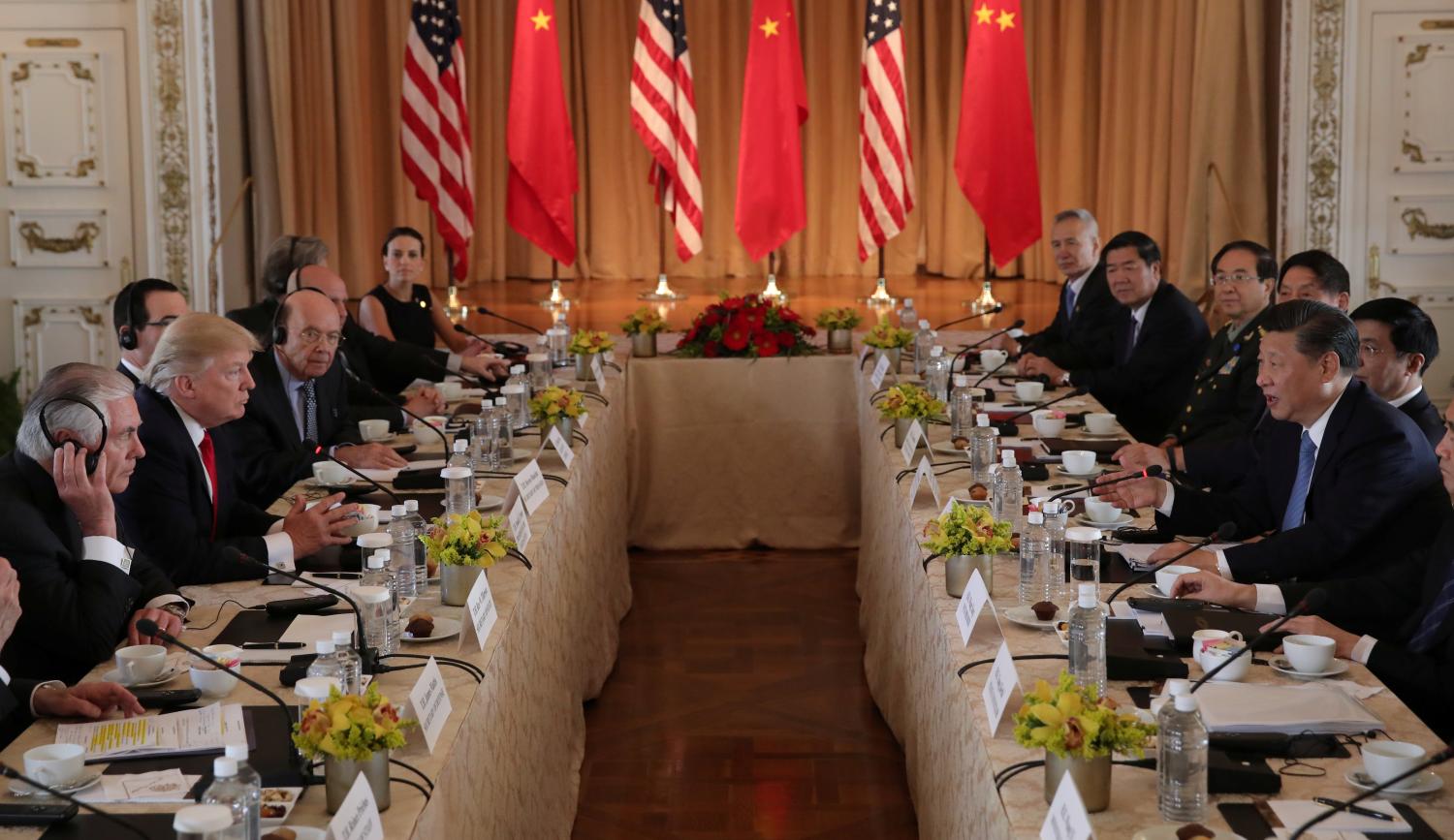
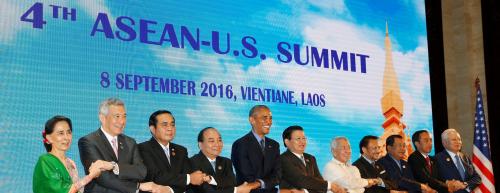
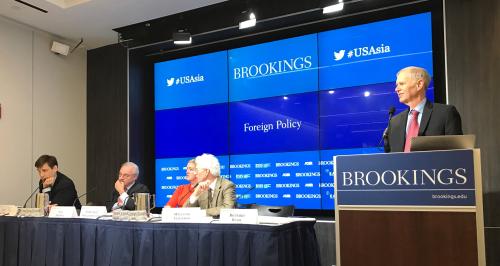
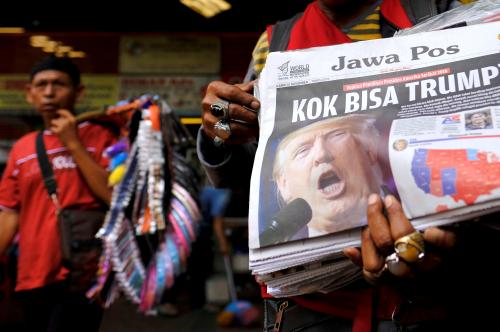

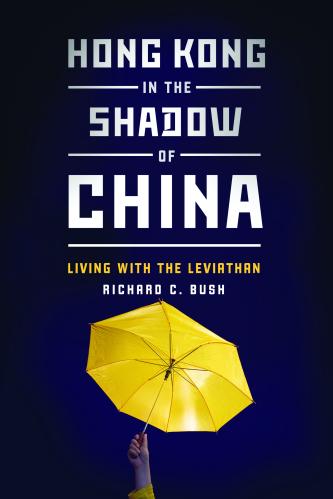
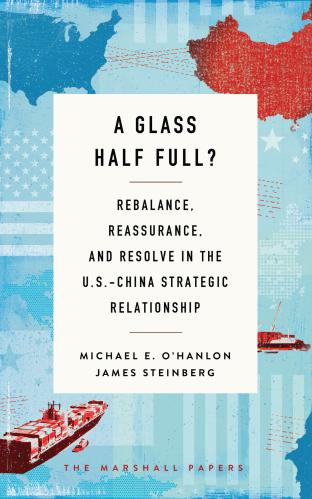


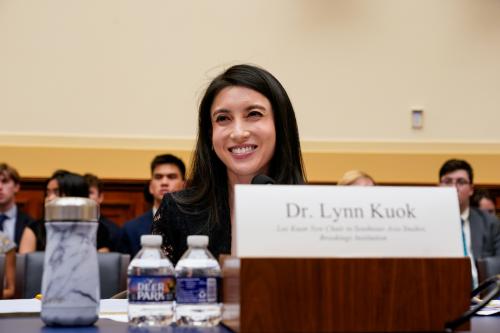

Commentary
Trump reassures ASEAN, previews a broader Asia policy
May 12, 2017